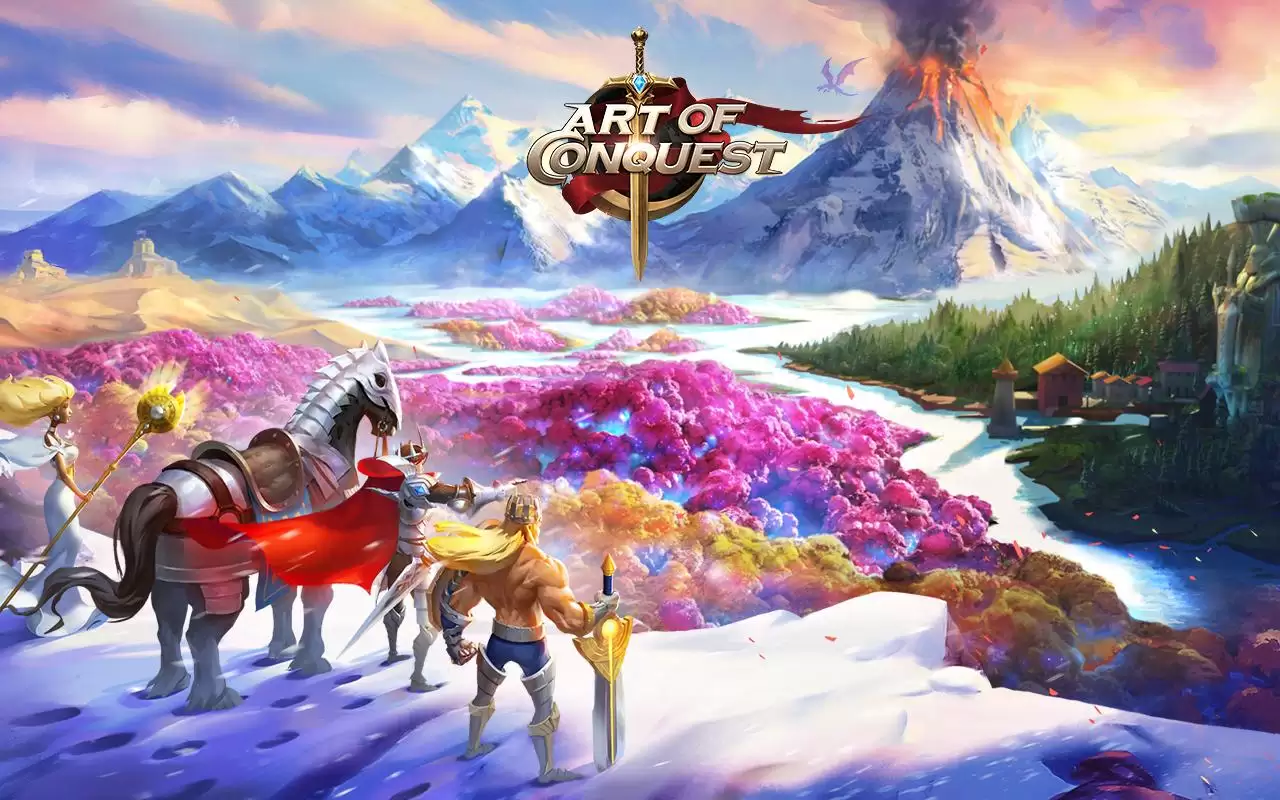
Battles are one of the most interesting elements of Art of Conquest, distinguishing this game from many other MMORTSs. In this guide you’ll learn how battles work, how to win them, and how to cut your losses!
How do battles work in Art of Conquest?
You have your army and the army of the enemy. The armies beat each other – whoever is left standing wins. Very simple!
However, there are several important mechanisms at work within this simple process.
First, you place your army on the battlefield before the actual battle begins. It’s easy to do – you just need to draw the right units on the field from the limited number of squares. You can’t just draw all the units at once – each unit needs a hero to “command” it. Heroes are special “big” units that can use skills and bind allied units (most often 2) to themselves.
Second, the “morale” system works in battles – if your army defeats an enemy unit, morale goes up: warriors start to run faster, hurt more, and defend more effectively within a few seconds. If your squad is defeated, however, the opposite happens: the army slows down and fights worse. Of course, any moral change works both ways – if your morale goes up, your enemy’s goes down, and vice versa.
Thirdly, each battle is limited in time – if you do not cope with the enemy in 2 minutes, then you lose.
Fourth, units are divided into “big” and “small” units – big units (like heroes or bosses) can resist magic and break through walls, while small units cannot. At the same time, there are always more small units in one squad than big ones.
Fifth, heroes can use skills – each has its own set of unique active and passive skills. The passive ones work all the time, while the active ones need to be set and used manually: they work within a certain radius of the hero and can hit an area, heal allied units, or erect barriers.
Otherwise, every battle takes place without your direct control – the units just run at each other and fight.
You should also be aware that heroes spend energy on battles (its amount is marked in the heart on the hero’s portrait). Energy is restored automatically within 48 hours or when you level up. If the heroes have no energy, you can’t fight, because you can’t put any units on the field. For some skills, heroes spend mana – it is marked with a blue drop. You can fight without mana if you have energy, but you can’t use individual skills.
How to fight more effectively?
First, you need to know your hero and his skills. Pick Avalon at the beginning of the game? Get more archers and move your hero closer to your enemies to demoralize them quickly with a volley of flaming arrows. Playing as Rufio? Put a stronger squad on him and jump into the frying pan at the start of the battle. When playing as Avril, you should hide behind lances and swordsmen, freezing your enemies and building ice barriers. There are considerably more heroes in the game, and I’m only giving general advice on the three starters – the basic idea is to learn the hero you play as and use him in the right way.
One hero, however, can’t take out many enemies (at least not fast enough) – you have to pick the right army. Every battle shows the power rating of your and your opponent’s army – but it gives only a general idea about the power and doesn’t guarantee the result (i.e. having gained 1000 vs. 900 you won’t necessarily win). Each unit in the game (and there are dozens of them) has a rank and a certain set of characteristics that affect its “usefulness”. Also, units can hit at a distance or close range – this also greatly affects tactics (shooters should always stand behind melee warriors, or at least as far away from the enemy as possible!). One army should not have many of the same units – it is always better to put stout warriors or cavalry in the front and archers in the rear than to throw thousands of identical swordsmen at the enemy.
The location of troops also matters. Look carefully at the enemy’s troop positions – the enemy may have ranged units, melee units, turrets, and barriers, and they may stand in completely different ways.
If the enemy troops are all standing in a block (which is rarely the case), they will be hit well by cavalry and then finished off by archers from behind. Also, such enemies can be surrounded and hit from both sides – a flank attack will be more effective than a direct hit.
In the same case, if the enemy’s army is divided into even units that are parallel to each other, you should assess the strength of these units – if there are towers or large units among them, it is better to concentrate the army on one of the flanks (so you will gradually destroy the enemy with a whole strong army, If there are no special enemies, you can strike from two sides simultaneously and then use your hero skills to quickly deal with one half of the enemy and finish off the other half.
When fighting against the boss, you have to quickly get rid of the first wave of his helpers (e.g. with the Hero Skill or cavalry), so that the whole army can group around the boss and quickly destroy his health. The rest of the enemy waves are not that important – as soon as the boss disappears, all the enemies will scatter, and you’ll win.
Note that each hero can use only one skill in battle, so it’s better not to waste it. For example, Avalon’s Arrow Hail is best used when enemy units are close to each other, and Vega’s healing should be used on frontline units that have lost about half their health.
How do you cut your losses?
Any battle can be won, but not every victory is equal. If you lose too many units, you’ll have to train and recruit them again, which is very costly, so it’s better to try not to lose any units at all and minimize any losses whenever possible.
First, you should properly place the units – the strongest units or the most unnecessary ones in large numbers should be in the first rows (so that they can hold back the blow). Already behind them there will be arrows, mages and units with less health. By simply placing your units correctly, you can avoid unnecessary losses.
It is also not a good idea to leave one squad far away from the others-even if it is very strong. If enemies surround one unit, it will most likely end up dead. However, you can use this to your advantage and intentionally leave a “bait” of useless units to make it easier to deal with an enemy army split in two. The first situation assumes that you are fighting an even army (in which case it is better not to split it up), and the second situation is useful if you have a lot of big units that can be removed to one side of the field, leaving the “bait” on the other side (then strong units will face less resistance and more easily deal with the enemy army).
If you can’t avoid losses, the battle can be replayed – you just spend one more unit of energy of the heroes placed on the field. It’s not worth it to do this because of simple archers of the first rank, but if you lost any strong units due to an accidental mistake and have understood how to avoid these losses, sometimes it is not unreasonable to play again. Keep in mind that if you don’t press the “replay” button immediately after a battle (i.e., just keep playing), you can’t replay it!
And of course you should always keep the hospital open – if there is room in the hospital, then the “dead” warrior will go to it, and he can be quickly restored. Warriors go to the hospital in the order of “living queue” – the first “died”, he went to the hospital (i.e. if, for example, the hospital limit is 20, then the twenty-first fallen unit will not get there and really will die). Adding warriors to the treatment queue has to be done manually – don’t forget to do that and then take the warriors back before you start a new battle!
Conclusion
In this guide, you learned how battles take place in Art of Conquest and got some useful tips on deployment and troop selection. Always keep the characteristics of your heroes in mind, place your gunners behind your melee warriors, and try to keep your losses to a minimum. I hope that you will find this guide useful and that you will win in Art of Conquest more effectively! Also remember that there are codes for Art of Conquest to get in-game rewards.

A big fan of gaming culture. She combines her passion for games with in-depth knowledge and analytical thinking to create clear and useful guides for gamers of all levels. Immersing herself in different gaming worlds, she shares her expert advice and helps players reach new heights in their adventures.




![Midnight Chaser Codes [Event] (November 2024) Midnight Chaser codes - money and boosts](https://pocket-codes.net/wp-content/uploads/2023/12/Midnight-Chaser-Codes-100x70.webp)






